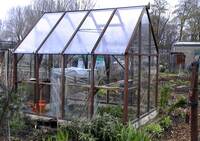- England
- Scotland
- France
- Holland
- Germany
- Italy
- Spain
- Portugal
- USA
- China
- Japan
- India
- Iran
- Advice
- Gardens
- England
- Scotland
- France
- Holland
- Germany
- Italy
- Spain
- Portugal
- USA
- China
- Japan
- India
- Iran
- Advice
- Garden Tours
Book: Landscape Planning and Environmental Impact Design: from EIA to EID
Chapter: Chapter 2 Landscape plans for public goods
Sustainability plans should show "action areas" to improve the sustainability of cities. Most of the objectives in Table 2.1 are well known but a curious feature of the lists is that the "bottom line", dealing with economy in resource use, has not been part of the traditional rubric, though it has obviously been of importance throughout history. Now that we have more information and can take a global view, the importance of using resources in a sustainable manner is recognised. It is a different goal from nature conservation. Some people argue that man will not survive as a species if biodiversity is not conserved. This is both possible and doubtable. One can imagine an artificial, but nevertheless sustainable, community. One may or may not wish to live there. The acceptance of sustainability as a planning objective marks a partial return to the values of the Middle Ages. Then as now, the motivation was both economic and religious. Peasants had to avoid waste. Monastic communities naturally took a very long-term view, because they expected to be immortal institutions. They had every reason to plant trees for shelter and fuel, to protect stream banks, to raise soil fertility, to develop fish stocks and to erect long-life buildings. My grandfather liked to sustain the values of his peasant forbears and was believed never to have purchased a piece of string. The Bruntland Commission definition of sustainability as "development that meets the needs of the present without compromising the ability of future generations to meet their own needs" (Bruntland, 1987) is not so clear as one might wish. It does not define the "needs of the present" and it does not help us to guess at the needs of "future generations". But several aspects of sustainability deserve consideration by planners. Resource-use Monastic and peasant societies had few inputs and few outputs. Almost everything came from the local ecosystem and was returned from whence it came. Modern lifestyles, in town and country alike, are characterised by high inputs, high outputs and long transport distances. We live as feudal masters. Energy, food and materials flow to us from all quarters. After being used, they become wastes and pollutants, besmirching the land, befouling the air, defiling the waters and despoiling the environment. The basic aim of sustainability planning is to reduce inputs-to and wastes-from the human ecosystem [Fig 2.18]. Wastes should be recycled, water returned to the ground, vegetation used for food and fuel, energy conserved, transport costs reduced. Nature should be revered - and conserved. 2.18 Sustainable cities should have lower inputs and lower outputs

